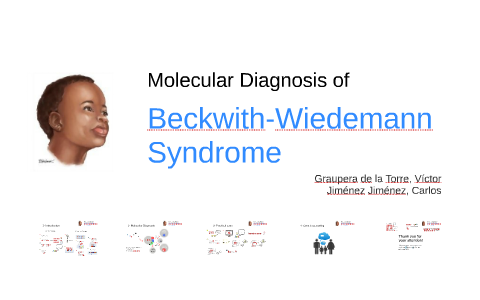Beckwith-Wiedemann Syndrome - GeneReviews® - NCBI Bookshelf
Por um escritor misterioso
Last updated 23 dezembro 2024

Beckwith-Wiedemann syndrome (BWS) is a growth disorder variably characterized by macroglossia, hemihyperplasia, omphalocele, neonatal hypoglycemia, macrosomia, embryonal tumors (e.g., Wilms tumor, hepatoblastoma, neuroblastoma, and rhabdomyosarcoma), visceromegaly, adrenocortical cytomegaly, kidney abnormalities (e.g., medullary dysplasia, nephrocalcinosis, and medullary sponge kidney), and ear creases / posterior helical ear pits. BWS is considered a clinical spectrum, in which affected individuals may have many or only one or two of the characteristic clinical features. Although most individuals with BWS show rapid growth in late fetal development and early childhood, growth rate usually slows by age seven to eight years. Adult heights are typically within the normal range. Hemihyperplasia (also known as lateralized overgrowth) is often appreciated at birth and may become more or less evident over time. Hemihyperplasia may affect segmental regions of the body or selected organs and tissues. Hemihyperplasia may be limited to one side of the body (ipsilateral) or involve opposite sides of the body (contralateral). Macroglossia is generally present at birth and can obstruct breathing or interfere with feeding in infants. Neonatal hypoglycemia occurs in approximately 50% of infants with BWS; most episodes are mild and transient. However, in some cases, persistent hypoglycemia due to hyperinsulinism may require consultation with an endocrinologist for therapeutic intervention. With respect to the increased risk for embryonal tumor development, the risk for Wilms tumor appears to be concentrated in the first seven years of life, whereas the risk for developing hepatoblastoma is concentrated in the first three to four years of life. Cognitive and neurobehavioral development is usually normal. After childhood, prognosis is generally favorable, although some adults experience issues requiring medical management (e.g., for renal or skeletal concerns).

Nasal Encephalocele disease: Malacards - Research Articles, Drugs

Genome-wide methylation profiling of Beckwith-Wiedemann syndrome

Beckwith-Wiedemann syndrome: MedlinePlus Genetics

Phenotype evolution and health issues of adults with Beckwith

Figure 1. [Comprehensive testing strategy to diagnose

Characterization of the Beckwith‐Wiedemann spectrum: Diagnosis and

Cancers, Free Full-Text

Uniparental disomy in a population of 32,067 clinical exome trios

Beckwith-Wiedemann Syndrome by Carlos Jimenez

APC-Associated Polyposis Conditions - GeneReviews® - NCBI

Ear Pits, Posterior Helical disease: Malacards - Research Articles
Recomendado para você
-
 Severe persistent pulmonary hypertension in a neonate with23 dezembro 2024
Severe persistent pulmonary hypertension in a neonate with23 dezembro 2024 -
 Rubinstein Taybi Syndrome: Most Up-to-Date Encyclopedia, News & Reviews23 dezembro 2024
Rubinstein Taybi Syndrome: Most Up-to-Date Encyclopedia, News & Reviews23 dezembro 2024 -
 Genes, Free Full-Text23 dezembro 2024
Genes, Free Full-Text23 dezembro 2024 -
 Cornelia de Lange Syndrome - GeneReviews® - NCBI Bookshelf23 dezembro 2024
Cornelia de Lange Syndrome - GeneReviews® - NCBI Bookshelf23 dezembro 2024 -
 Rubinstein-Taybi syndrome (RTS)23 dezembro 2024
Rubinstein-Taybi syndrome (RTS)23 dezembro 2024 -
 Expanding the phenotype associated to KMT2A variants: overlapping clinical signs between Wiedemann–Steiner and Rubinstein–Taybi syndromes23 dezembro 2024
Expanding the phenotype associated to KMT2A variants: overlapping clinical signs between Wiedemann–Steiner and Rubinstein–Taybi syndromes23 dezembro 2024 -
 A novel CREBBP mutation and its phenotype in a case of Rubinstein23 dezembro 2024
A novel CREBBP mutation and its phenotype in a case of Rubinstein23 dezembro 2024 -
 Frontiers Behavioral and neuropsychiatric challenges across the lifespan in individuals with Rubinstein-Taybi syndrome23 dezembro 2024
Frontiers Behavioral and neuropsychiatric challenges across the lifespan in individuals with Rubinstein-Taybi syndrome23 dezembro 2024 -
 SciELO - Brasil - Prosthetic rehabilitation of a child with Rubinstein-Taybi Syndrome after dental trauma: case report Prosthetic rehabilitation of a child with Rubinstein-Taybi Syndrome after dental trauma: case report23 dezembro 2024
SciELO - Brasil - Prosthetic rehabilitation of a child with Rubinstein-Taybi Syndrome after dental trauma: case report Prosthetic rehabilitation of a child with Rubinstein-Taybi Syndrome after dental trauma: case report23 dezembro 2024 -
 Rubinstein-Taybi syndrome with agenesis of corpus callosum23 dezembro 2024
Rubinstein-Taybi syndrome with agenesis of corpus callosum23 dezembro 2024
você pode gostar
-
 T4 Series Kart Package – Tillotson23 dezembro 2024
T4 Series Kart Package – Tillotson23 dezembro 2024 -
How strong is Cosmic Fear Awakened Garou if we compare him with the top tiers of the Naruto/Borutoverse? - Quora23 dezembro 2024
-
 Counter-Strike: Global Offensive on Mac: How to Play & Tests23 dezembro 2024
Counter-Strike: Global Offensive on Mac: How to Play & Tests23 dezembro 2024 -
 Wolfenstein 2: The New Colossus - How To Beat The Last Boss23 dezembro 2024
Wolfenstein 2: The New Colossus - How To Beat The Last Boss23 dezembro 2024 -
 Golden State Warriors beat Boston Celtics 103-90 to win 4th NBA23 dezembro 2024
Golden State Warriors beat Boston Celtics 103-90 to win 4th NBA23 dezembro 2024 -
Heroes of Skyrealm para Android - Baixe o APK na Uptodown23 dezembro 2024
-
 Esmagar Palavras: Caça Palavra para Android - Download23 dezembro 2024
Esmagar Palavras: Caça Palavra para Android - Download23 dezembro 2024 -
 Club 🇵🇹 Portugal 1 (Liga Portugal) em 202323 dezembro 2024
Club 🇵🇹 Portugal 1 (Liga Portugal) em 202323 dezembro 2024 -
 Crossed Swords II Details - LaunchBox Games Database23 dezembro 2024
Crossed Swords II Details - LaunchBox Games Database23 dezembro 2024 -
Infinite Poolrooms Escape – Apps no Google Play23 dezembro 2024
